10 Designs Bring Theatrical Drama to the Garden
http://decor-ideas.org 05/13/2015 22:13 Decor Ideas
Theater and garden design have been closely connected at various points in gardening history. During the Italian Renaissance, an outdoor stage was often set in the classic formal gardens, where operas and plays would be performed. The English took this further in the 18th century, with the landscape gardens of Stowe and Rousham, when the whole garden became a stage and its visitors became actors in it.
Small gardens today can also give the designer the opportunity to take a theatrical approach to how the garden is laid out and viewed. Many small gardens, mainly formal in design, tend to have just a front-on view, usually from the house, and are perfect for creating a stage, with plants, statues and water features becoming the players.
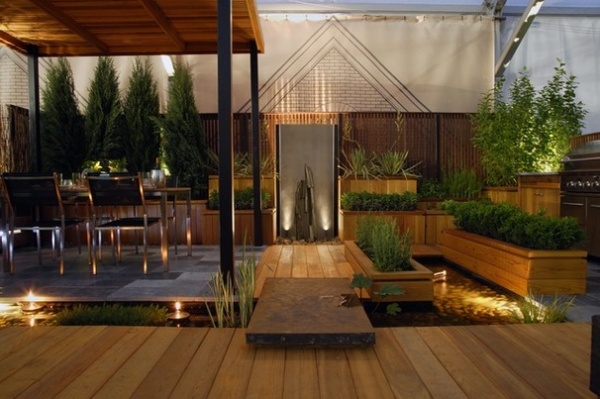
Like a theater stage, this whole garden is seen at once, with nothing hidden to surprise and everything playing its part in the design. It can thus be seen to mirror a theater, with parts representing the wings, backdrop and stage.
Drama is created by the seasonal changes of the plantings, shadows created by topiary or statuary, lighting effects, or owners’ acting out their daily life on their garden stage.
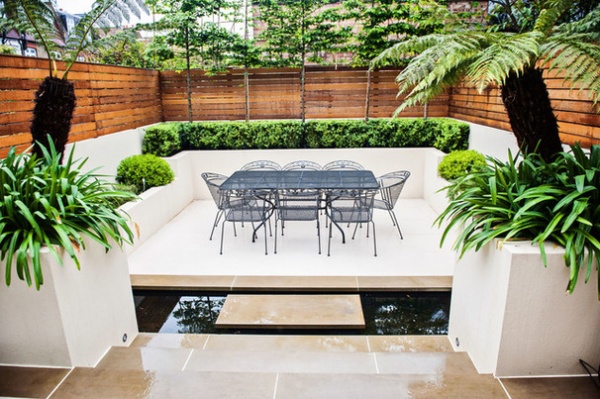
1. The view from the stalls. This cleverly designed small, shallow garden has been transformed into a stage, and we are sitting in the stalls. A backdrop of standard trees forms the set, dramatically planted containers create the wings, and the simple, formal water feature separates the auditorium and stage.
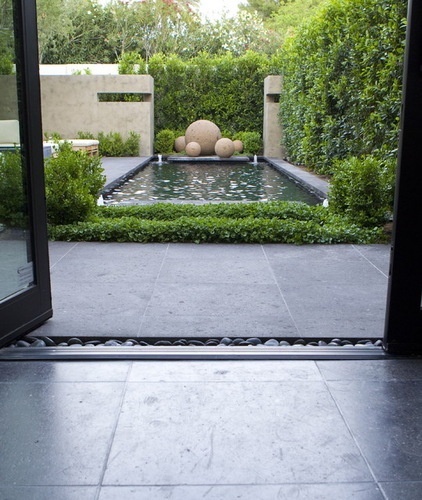
2. Classically inspired theater. This small garden alludes to the classical formal gardens of the past with great theatricality. Low, clipped evergreens, like stage footlights, lead us to the open stage formed by the simple pool. Tall evergreen hedging forms a wing and a backdrop, and the stone spheres then become the stars of the stage.
The connection between the home and garden is also easy to see here, with the bifold doors, a common feature of stage-set gardens.
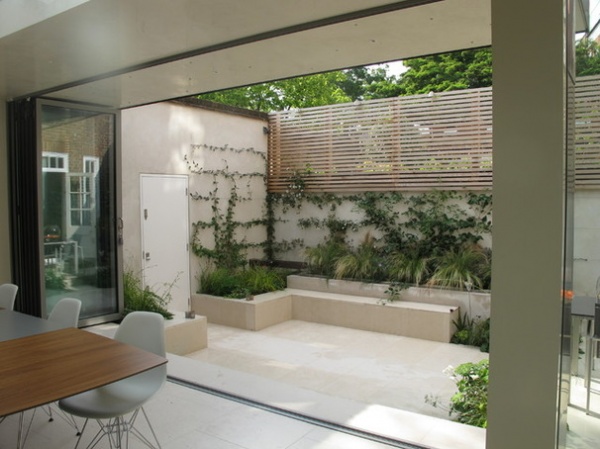
3. Theater comes into the home. The intimate, minimalist garden here is very shallow and very much on display from the interior living space, with the rill and plants along the far wall rounding out the cast.
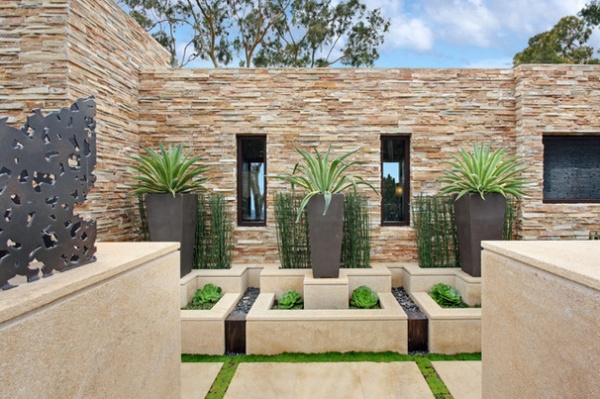
4. The backdrop takes a starring role. Pure gardening theater is at its best when viewed head on. The plants here take all the main parts, yet the rough slate wall backdrop is the real star.
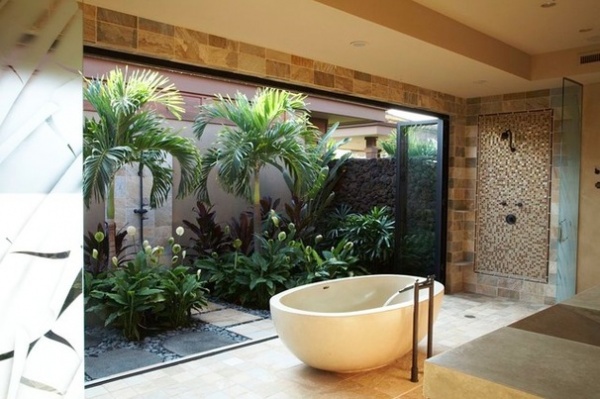
5. Plants steal the limelight. Plants alone can be used to set the stage. For those of us residing in more temperate climes, exotic plants on their own create a theatrical feel. Here the owners can watch a stunning performance from their own bathtub, with the Manila palms (Adonidia merrillii) acting as leads among the chorus line of peace lilies (Spathiphyllum sp).
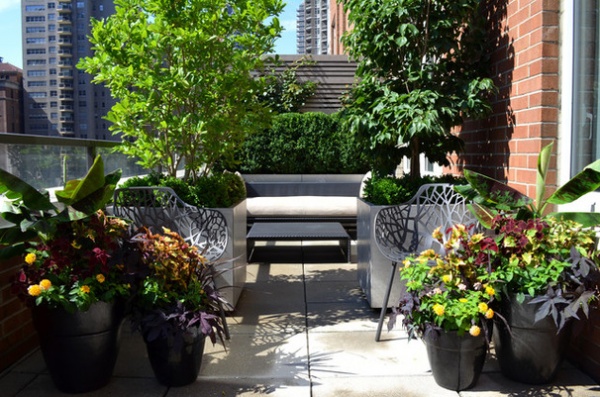
6. The star in your own show. The smallest terrace or balcony gardens often make perfect stage-set gardens. They are generally secluded, protected from the outside by hedges or walls, or raised above the surrounding bustle. The environment tends to be, by its nature, artificial and can easily transform into any style of stage set you want.
Here the stage has been beautifully set with wings created by potted evergreens and a backdrop of clipped boxwood (Buxus sp). The owners are surely the stars of the show when relaxing on their centrally placed furniture.
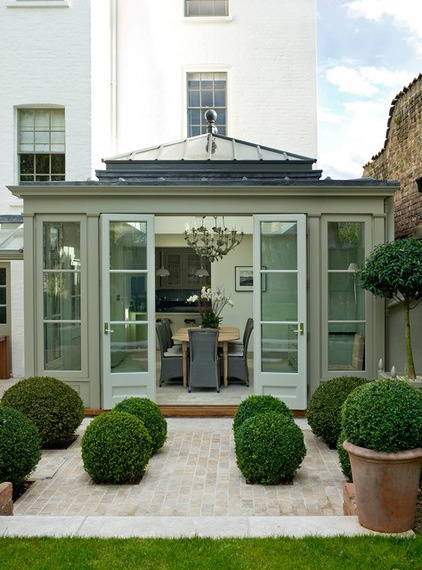
7. Topiary takes center stage. Clipped boxwood (Buxus sp), a plant used since Roman times to create features in the form of topiary and to frame areas such as knot gardens, can also introduce permanent actors to a small garden stage. Here, clipped spheres of boxwood act on a stage of brick pavers, giving a simple year-round performance.
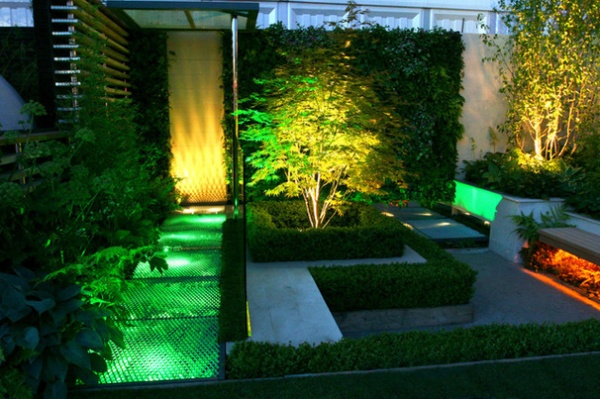
8. The drama of lighting. Lighting is one of the main tools used by set designers to set the right atmosphere for a theatrical production. Dramatic effects can be created in garden design by spotlighting features such as trees or sculptures, or by casting light onto a plant or feature for shadows.
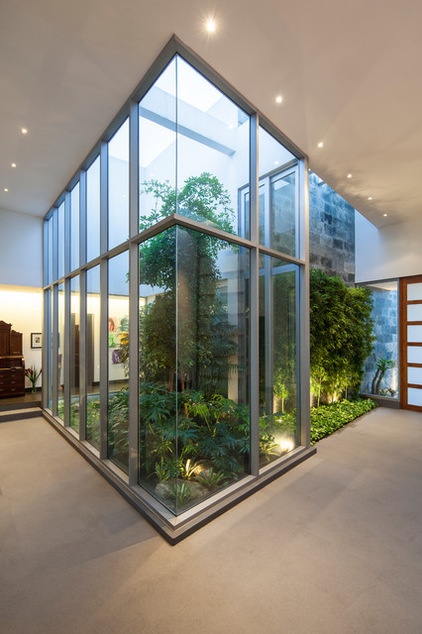
9. Theater in the round. A permanent stage is set in this glass atrium, creating a theater-in-the-round view of the garden.
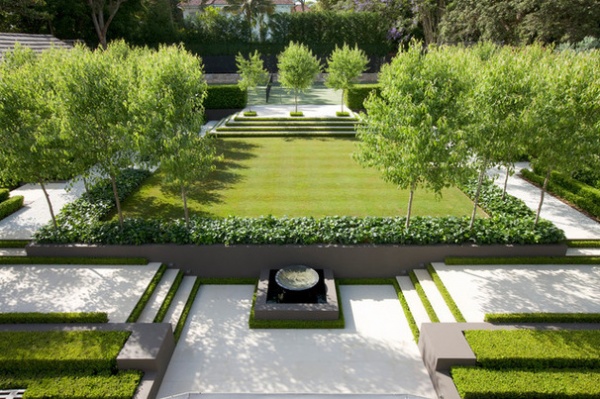
10. A simple design creates classic formal theater. Though we’ve seen how small gardens meet the criteria for creating stage-set designs, larger formal gardens can also have layouts with theatrical style.
This formal geometric garden follows ideas from the past, being best viewed from a fixed point — doesn’t the lawn look like a great stage for socializing, if not Shakespeare?
More: Light Your Landscape for Drama and Function
Related Articles Recommended












